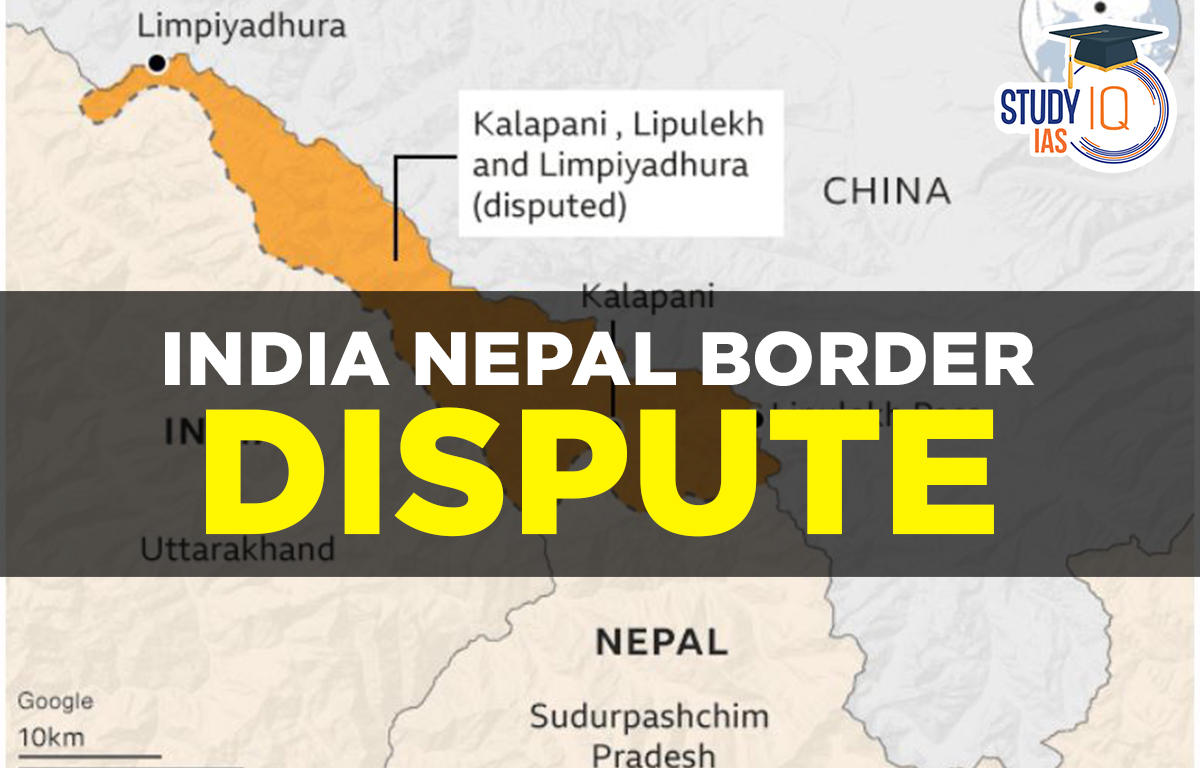Table of Contents
India Nepal Border Dispute
India and Nepal enjoy excellent bilateral ties. These relationships are close, all-encompassing, and multifaceted because they are based on the long-standing connections between history, culture, tradition, and religion. They are more noticeable when people interact in political, social, cultural, religious, and economic engagements. To add up a formal flavour to such historical relations, the two countries established diplomatic relations on 17 June 1947.
The unwavering commitment to peaceful coexistence, sovereign equality, and understanding of each other’s aspirations and sensitivities has been the firm foundation on which our bilateral relations have been growing further.
The open border between the two nations continues to be a distinctive aspect of our relations. The freedom of our people’s migrations to one another’s area and the improvement of contacts have been substantially helped by the unrestricted frontier.
Read More: India Pakistan Border Dispute
India-Nepal Border Area
The 1770 km long border includes the Himalayan territories as well as Indo-Gangatic Plain. Following the Sugauli treaty between the British and Nepal in 1816, the present boundary was established. Five states of India share the boundary with Nepal they are Uttarakhand, Uttar Pradesh, Bihar, West Bengal and Sikkim.
At present both India and Nepal have a border dispute over regions such as; Kalapani, Lipulekh Trijunction between India, Nepal and China, Susta Region of West Champaran (Bihar).
Read More: India-China Border Dispute
India Nepal Border Dispute Map
Here is the major India Nepal Border Dispute has shown below along the border area:

India-Nepal Border Conflicts
Since the 1962 Sino-Indian War, Kalapani has been administered by India. The claims to Kalapani by Nepal date back to a century since the Treaty of Sugauli 1816 signed between the then Kingdom of Nepal and British India. Under this treaty, the Kali River has been marked as the boundary between India and Nepal in this region.
But due to a lack of clarity and no consensus on what is the precise location of the river, there has been a dispute between the two countries about whether the land consisting of Kalapani, Limpiyadhura and Lipulekh is part of India or Nepal.
Susta Region
The region named Susta is located on the bank of the Gandak river (it is called Narayani River in Nepal) the prominent reason for the dispute in the Susta region is the changing course of the Gandak River.
Read More: Jammu & Kashmir
India Nepal Border Dispute of Kalapani
Kalapani is located in the easternmost corner of the Uttarakhand district of Pithoragarh at a height of 20000 ft, it is situated on the Kailash Mansarovar route. River Kali in the region of Kalapani demarcates the border between both the country.
The reason the boundary dispute between India and Nepal occurred was due to differences between the source location of the kali river, as each country produced maps supporting their own claims over the region.
India’s Stand on Kalapani Dispute
The Sugauli Treaty does not define the territory north of these streams because the Kali River originates in springs that are located far below the Lipu-lekh pass. The nineteenth-century administrative and revenue records also demonstrate that Kalapani was on the Indian side and was included in the Pithoragarh district of Uttarakhand.
Nepal’s Stand on Kalapani Dispute
North-west of Lipu Lekh, in Limpiyadhura, a stream feeds into the Kali River. Since they lie to the east of the river, Kalapani, Limpiyadhura, and Lipu Lekh are all located in Nepal’s Dharchula district. In an effort to gain favour with India, the rulers removed Lipulekh from the country’s map.
Following the 1962 India-China war, King Mahendra gave the province of Kalapani to India in an effort to allay its security worries due to alleged lingering Chinese threats. The Kalapani region is not a cause of the Indo-Nepal dispute as it is Nepal’s territory that was handed over to India for use temporally by the King of Nepal.
Read More: Citizenship Amendment Act
India-Nepal Border Dispute UPSC
Given the significance of ties with Nepal, which are frequently romanticised as being based on “roti-beti” (food and marriage), India must take action immediately, especially given that it is already engaged in a conflict with China in Ladakh and Sikkim.
The movement of the Himalayan Rivers has not been taken into account in the bilateral agreements that India and Nepal now have. This is mostly due to the lack of a strategy that regularly acknowledges ecological concerns and river needs. India and Nepal should take into account all shared environmental variables in order to resolve the boundary dispute.





















 WhatsApp
WhatsApp